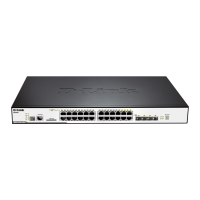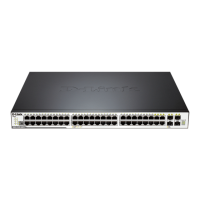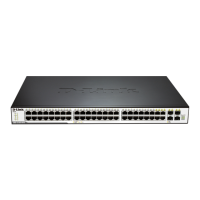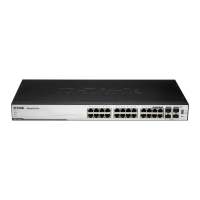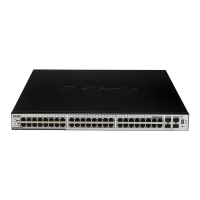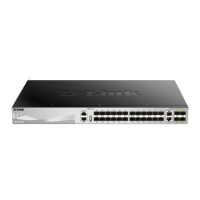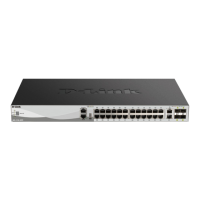xStack® DGS-3120 Series Managed Switch Web UI Reference Guide
21
Command Logging Settings
This window is used to enable or disable the command logging settings.
To view this window, click System Configuration > Command Logging Settings, as shown below:
Figure 2–23 Command Logging Settings window
The fields that can be configured are described below:
Parameter Description
NOTE: When the switch is under the booting procedure, all configuration commands will not be
logged. When the user uses AAA authentication to logged in, the user name should not be
Stacking
From firmware release v1.00 of this Switch, the Switch now supports switch stacking, where a set of six switches
can be combined to be managed by one IP address through Telnet, the GUI interface (web), the console port or
through SNMP. Each switch of this series has two stacking ports located at the rear of the device, which can be
used to connect other devices and make them stack together. After adding these stacking ports, the user may
connect these ports together using copper cables (also sold separately) in one of two possible topologies.
Duplex Chain – As shown in Figure 2–24, The Duplex Chain topology stacks switches together in a chain-link
format. Using this method, data transfer is only possible in one direction and if there is a break in the chain, then
data transfer will obviously be affected.
Duplex Ring – As shown in Figure 2–25, the Duplex Ring stacks switches in a ring or circle format where data
can be transferred in two directions. This topology is very resilient due to the fact that if there is a break in the ring,
data can still be transferred through the stacking cables between switches in the stack.
Figure 2–24 Switches stacked in a Duplex Chain Figure 2–25 Switches stacked in a Duplex Ring
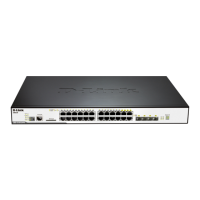
